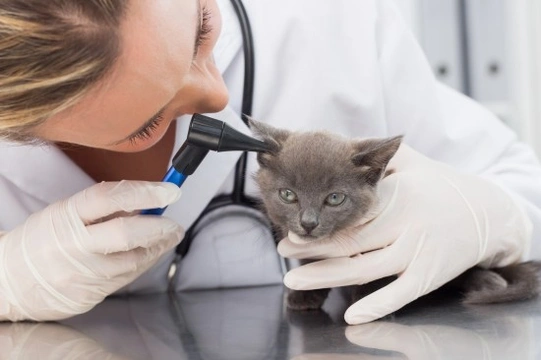
Top Tips for Treating Ear Infections in Dogs and Cats
Ear infections in both cats are dogs are one of the more common health complaints that all too often go unnoticed which makes them that much harder to treat. Not only this but dogs and cats have to put up with a lot of irritation, soreness and discomfort until a treatment kicks in. Having the problem diagnosed early makes these conditions a lot easier to resolve and helps find the root cause of an infection.
An Ear Infection is Typically Caused by an Underlying Condition
Most ear infections are triggered by another underlying condition and therefore should be seen as a symptom not a condition on its own. A cat or a dog may get an ear infection because they are allergic to an ingredient in their pet food or they may even be allergic to something in their environment. Pollen, mould, dust mites can trigger the infection but then so could a foreign object that becomes lodged in your pet's ears.
Another reason why some dogs are more prone to suffering from ear infections is because they love swimming and therefore often have damp ears which is the perfect environment for bacteria to thrive. Other anatomical abnormalities may also contribute to an ear infection as would any hormonal disorders which makes finding the underlying cause a little difficult at times.
Ear Mites Could be a Problem – But Usually in Kittens Only
Although ear mites could be the problem in an older cat, it is more usual for kittens to suffer with them than a mature cat and the same can be said of puppies and older dogs. However, if an older dog or cat has been in contact with a puppy or a kitten suffering from ear mites, they too will may well have them. With this said the most common reason for a mature dog or cat to suffer an ear infection would be due to a bacterial, a yeast infection or both and not because they have ear mites.
The Importance of Keeping a Pet's Ears Clean
It's really important to keep a pet's ears clean and free of any nasty or smelly "gunk" that may build up in them. If your pet's ears are really full of nasty deposits, a vet may well recommend sedating them in order to flush out their ears which would involve going deep inside to the ear drum. This is something that only a qualified vet should do.
Once the ear drum has been cleaned, the vet would then examine it to see whether any structures located behind the drum need cleaning too and if this should prove to be the case, it would require a more aggressive form of treatment. The other reason it is so important to examine ear drums is because there are some topical treatments which can cause a pet to go deaf should they be used on one which has ruptured.
Once a vet has prescribed a treatment you would then have to use it following the vet's instructions to the letter. Ear drops are typically put directly into the ear and then you have to fold the ear flap over the canal whilst gently massaging the ear until you hear a squishy noise. Once you let go, your pet will want to shake their heads which they normally do quite vigorously so it's best to do this in the garden or garage.
Any dirt or debris that's deep down in the ear will be brought closer to the surface which makes it that much easier to wipe away. You should never place a cotton bud or anything else in your pet's ear canal as this may cause irreparable damage to their ear drums and you might just end up shoving the "gunk" back down deeper into their ears something you want to avoid doing.
The Importance of Treating an Ear Infection Early
It cannot be stressed strongly enough how important it is to treat an ear infection as early as possible. If left untreated, the infection becomes chronic which could lead to permanently damaging your pet's ears. The infection might well also alter the anatomy of a dog or cat's ears which in short, means they would be more susceptible to ear infections in the future with the bad news being these infection could be that much harder to treat.
If you notice your pet shaking their heads and doing so constantly or they start scratching at their ears, this could be a sign an ear infection could be flaring up. You may also find there is a nasty smell or discharge coming from their ears so a quick trip to the vet would be in order. The vet would then prescribe the right sort of ear drops to use on your pet after a thorough examination.
The Importance of Dealing With Underlying Causes
A healthy dog or cat that boasts a normal shaped ear canal will seldom suffer from an ear infection but if they do, it is crucial to have this treated as soon as possible. If you own a pet whether a cat or a dog that repeatedly suffers from ear infections, there may be an underlying cause which needs to be addressed sooner rather than later. With the help of your vet, you would be able to establish what is triggering the ear infection and then eliminate it from the equation whilst your vet prescribes the right treatment to make your pet more comfortable and which would resolve the infection as quickly as possible.



